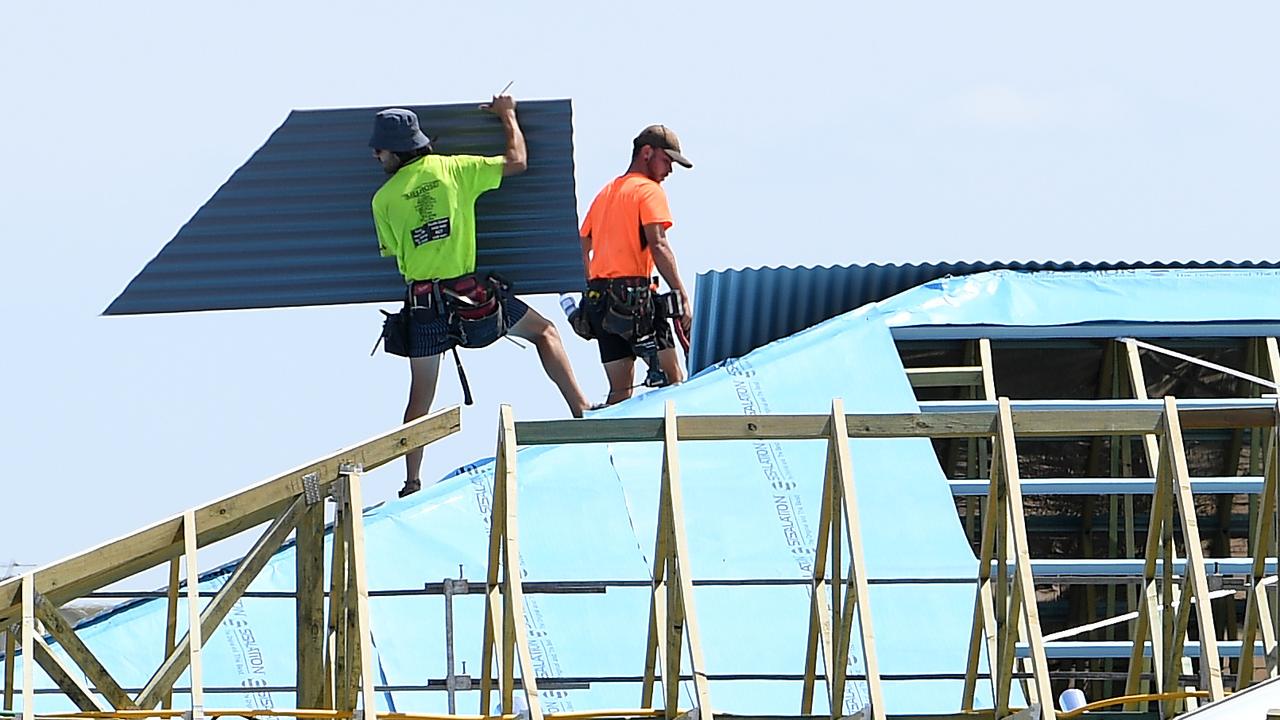Technocrats, knowlege workers, soft skills to dominate future work
TECHNOCRATS, knowledge workers and soft skills dominate the future of work.
WHEN I was a kid I was a big fan of The Jetsons. This cartoon show created in the early 1960s imagined life 100 years hence in the 2060s.
It was an inversion of the successful Flintstones genre of typical family life in a very different time. The father George Jetson worked at Spacely Sprockets and complained about how hard he had to work pushing buttons for two hours every day. The amusing aspect of this incarnation of the future of work is that by the standards of the day George’s job was easy and yet he complained about how demanding it was.
One thing we can say about work in Australia in 2024 or indeed in 2064 is that we will complain about how arduous it is and most likely about how workers in the olden days had it easy because things were a bit slow way back in 2014.
Do you realise that up until the late 20th century some workers in some government departments could retire at the age of 55 on a defined pension for life — transferable in part to their spouse should they die — and that the value of this pension was more generous than the contributions that they had made throughout their career? Let me assure you that this sort of largesse — I could have said rort — will not be part of the future of work. And that’s because it is both unfair and it is unsustainable.
Australians will be working longer in the future to beyond 55 and even beyond 65 as the rest-of-life expectancy for a 60-year-old pushes beyond 85 and towards 90. We are simply not rich or productive enough as a society to allow workers to retire at 55 and to kick on in full superannuant mode for another 30 years. Workers will work until their late 60s and even into their early 70s from the 2030s onwards. This will be made possible as the nature of work shifts from an emphasis on manual labour to knowledge work.
Retirement will still exist, but it will pertain to the last 10 or 15 years of life which is still a generous concept. But although we will be working later in the life cycle we will not be engaging in full-time work as early on in the life cycle.
The proportion of workers starting work at 15, which is still technically possible, will diminish in the future as the nature of work changes. A 15-year-old can do an apprenticeship or can serve in a shop or even work on a factory assembly line. But this kind of low-skilled service and production-orientated work is diminishing. Low-skilled work is being outsourced to China or is being replaced by technology. Jobs like bank teller, petrol pump attendant, and even check-out operator have either been replaced or are being marginalised by technology. The future of work is inextricably tied to the future of education and the future of skills.
Work is dividing into a world of technocrats and a world of knowledge workers; people who have technical proficiency and people who design, manage and implement.
Over the last 30 years technology has diminished job opportunities in traditional blue-collar type industries; over the next 30 years technology will steadily erode job options in some white-collar industries.
This may not be so much due to the invention of machines that can deliver nursing or teaching services, for example, but through disruptive innovation that is connected with new technology. Better healthcare and the development of bio-monitors might allow some patients to remain in the family home with access to an at-call nursing service.
The development of online or intelligent machine technology might better enable students to learn at their own pace thereby diminishing the need for teachers.
Both the teaching and the nursing workforce are among the largest of any single occupation in Australia. There is an incentive to save the recurring annual labour costs by applying to these professions the technological and innovation practices that delivered such efficiencies to manufacturing.
If work is to retreat to technocrats and to knowledge workers then what will be required is an extended period of training. This will require primary, secondary and tertiary or technical training, as well as on-the-job training to ensure that by the age of, say, 25 workers are qualified to perform required tasks. This leaves 45 productive years of tax-paying capacity to notionally support 25 years of nurturing and 15 years of retirement. This model is workable but it probably requires considerably more tax to be paid during the working years than is currently the case.
Work will be increasingly shared between men and women; this transition kicked off in the 1970s and initially applied to the 20- and early 30-something stages of the life cycle. Better educated and more experienced women in the workforce will result in women working longer.
The late 50s and the 60s will see both men and women working longer but not necessarily harder. I think the great social shift of the next decade will be around managing work and carving out a portfolio lifestyle.
This involves blending work with lifestyle so as to retain a source of income and to deliver quality of life in the post-children post-mortgage stage of the life cycle.
In the work heartland between 30 and 45, work in the future will no longer be constrained by the traditional notions of Monday to Friday and by the hours of nine to five and especially for knowledge workers.
Technology, the brutal companion of efficiency, will ensure that during the peak years work never ceases. Smartphones and other mobile technology will allow knowledge workers to trade bits and pieces of time in bits and pieces of places to respond to the demands of work.
This doesn’t necessarily mean that the workforce of the future will work from home; what it does mean is that work in the future will be fluid, mobile, omnipresent and always demanding of an immediate response.
At the 2001 Census barely 4 per cent of the non-farm workforce worked from home. At the 2006 Census this proportion was 4 per cent. At the 2011 Census this proportion was again 4 per cent. The trouble with working from home as a permanent arrangement is that there is no surety of workflow. Knowledge work in the future might best be described as work on the move.
Work might be conducted over the phone or through a laptop at home, on a train, in a cafe or in a touch-down pad in city office building. This free-form and fluid nature of work allows for collaboration with others and for responsiveness to issues and opportunities. But it also allows for continuity of relationships and therefore of workflow.
The way to future-proof the demand for your work output is to ensure that you have the right technical skills which demands study and training and especially from the late teenage years onwards. The most vulnerable workers in the future, as indeed they are today, are the unskilled and the inflexible.
The next thing the workforce of the future will require are soft skills like the ability to fit in seamlessly and to relocate and to adapt to different circumstances. It is the ability to walk up to a group and to self-confidently introduce yourself and to ask questions.
Regardless of how the nature of work unfolds, regardless of how many jobs you might have during your long working life, if you have technical skills and if you have the right soft-skill attitude, then you will always be in demand in the workplace of the future to participate in the future of work.
Bernard Salt’s new book More Decent Obsessions (MUP) is now available; @bernardsalt;
bsalt@kpmg.com.au



